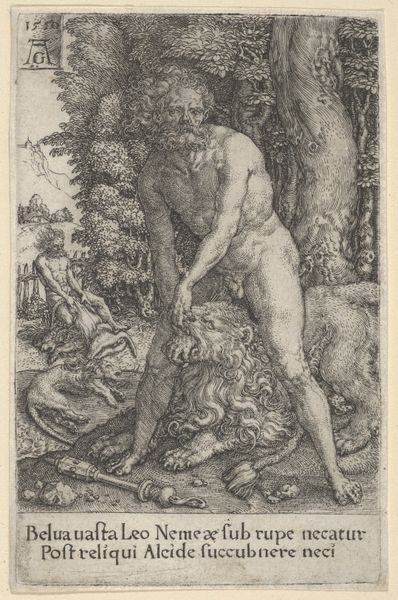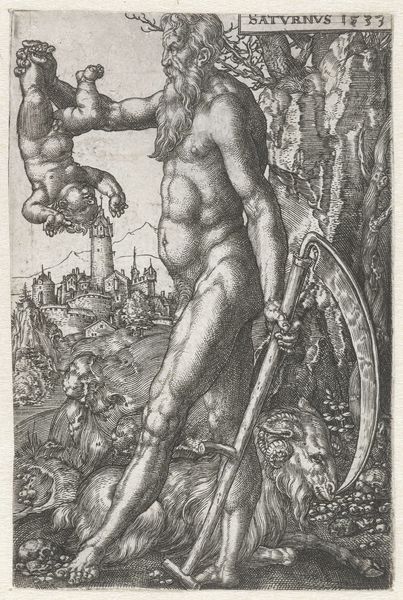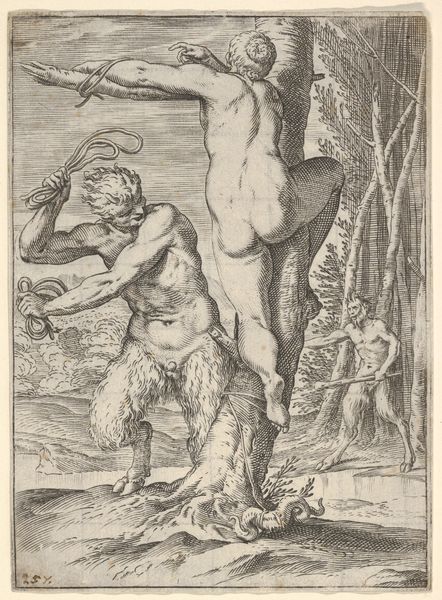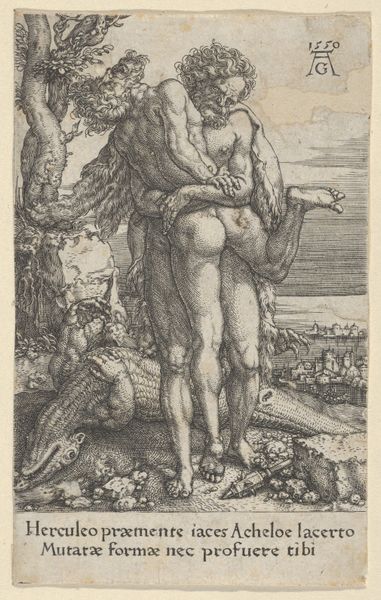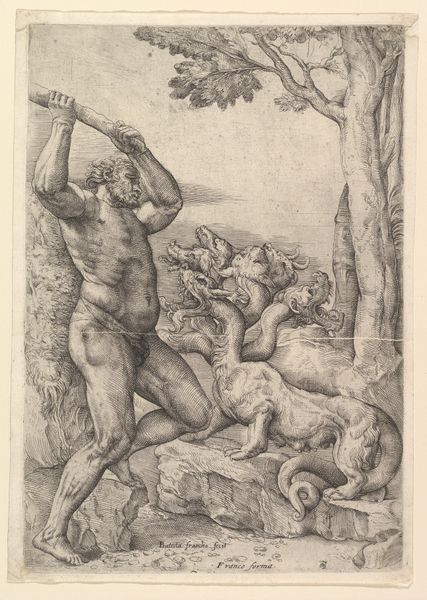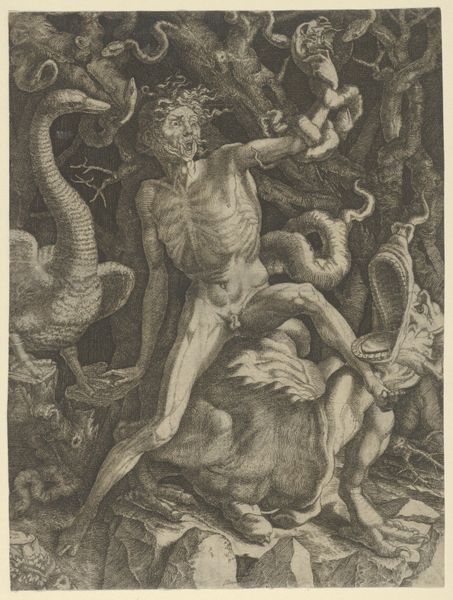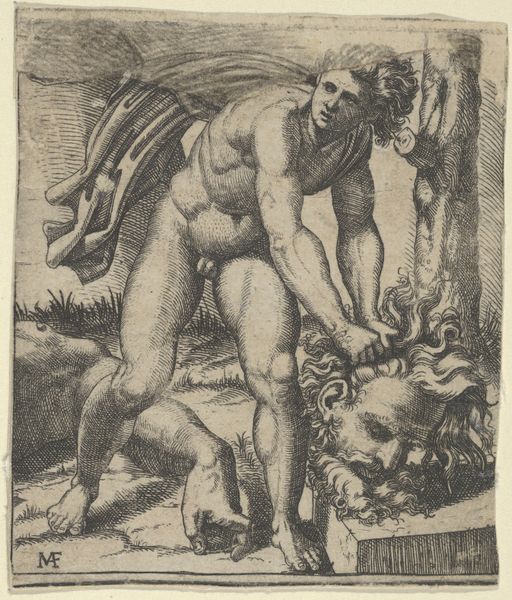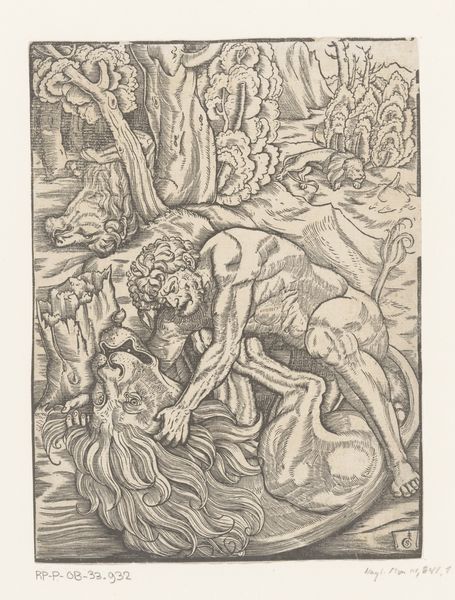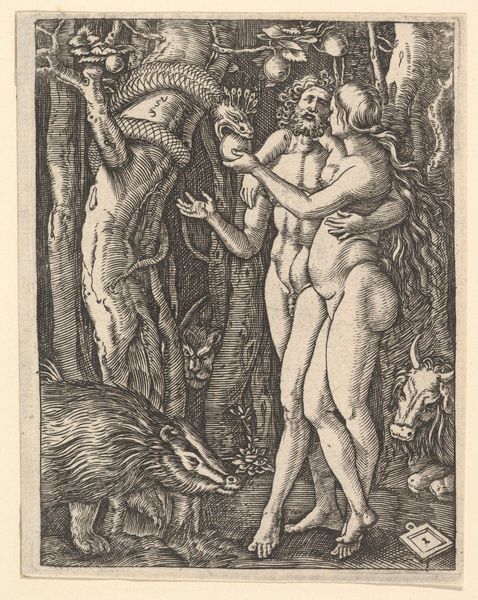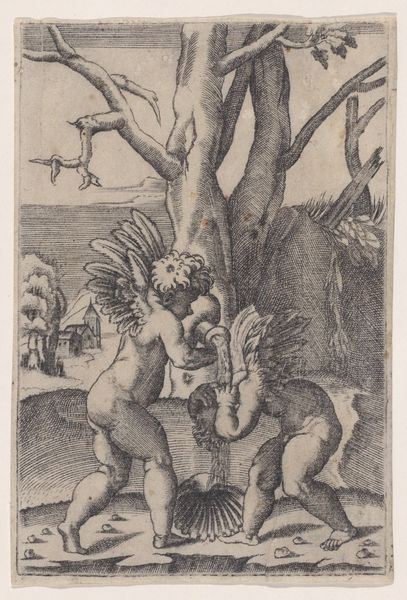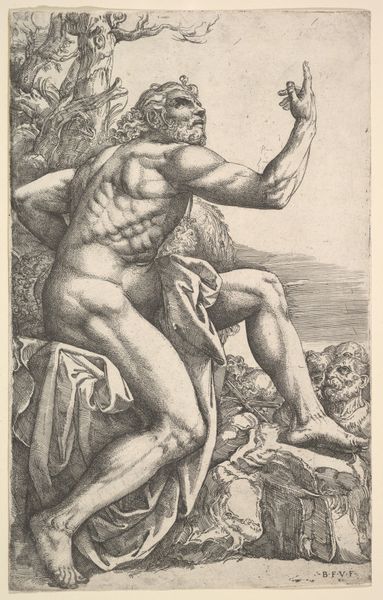
Hercules Fighting the Hydra of Lerna, from The Labors of Hercules 1550
0:00
0:00
drawing, print, engraving
#
drawing
# print
#
old engraving style
#
figuration
#
history-painting
#
northern-renaissance
#
nude
#
engraving
Dimensions: Sheet: 4 1/4 × 2 11/16 in. (10.8 × 6.9 cm)
Copyright: Public Domain
Curator: Welcome. Today we’re examining "Hercules Fighting the Hydra of Lerna," a 1550 engraving by Heinrich Aldegrever. It's part of the series "The Labors of Hercules." Editor: My initial impression is one of tightly wound chaos! Look at the incredibly intricate detail, particularly in the writhing hydra. It almost feels claustrophobic. Curator: It's interesting you say that. Aldegrever worked during a period of great social upheaval with the Reformation. The image reflects anxieties about heresy and the disruption of traditional authority, mirroring the monstrous hydra’s proliferation. Editor: That's fascinating context. I see how Hercules becomes this symbol of order, even though visually, the figure himself seems caught up in the very density he’s trying to overcome. The artist plays with textural contrast, setting Hercules' smooth skin against the scales and fur of the beast. Curator: Indeed. This work was produced in the midst of a visual culture consumed by emblem books and iconographic programs. The myth was revived during this time period as an allegorical figure for the triumph of virtue over vice. Note the choice to have the engraving include Latin script too. Editor: The engraving technique really shines here. See how Aldegrever uses the varying thicknesses of lines to create a sense of depth, almost sculpting with the burin? Curator: The distribution of such prints speaks to an expanding middle class in Northern Europe who found resonance in images reflecting humanist ideas and also popular mythological figures. The small scale print allowed for the broad circulation of classical subject matter throughout the Germanic states. Editor: It’s striking how he has packed so much narrative into such a small space. This wasn’t some grand commission for public display but instead produced for the market. I am left with the impression of a very self-aware artist. Curator: Exactly, it’s this ability to blend the classical with the contemporary anxieties of 16th-century Europe that makes Aldegrever's work so compelling. Editor: The artist seems to be caught in the visual problem of making the story as impactful as possible! Curator: Precisely. We see here that it serves as a marker of cultural shifts and anxieties while utilizing very striking and particular artistic choices.
Comments
No comments
Be the first to comment and join the conversation on the ultimate creative platform.

